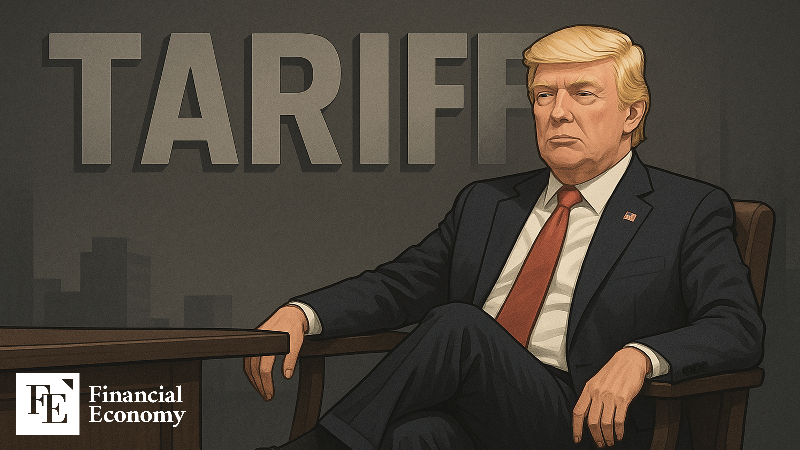Oil’s Double Whammy: Price Plunge Cools Inflation While Bolstering Trade Rhetoric
Input
Modified
A barrel falls, and prices bow, Inflation loosens under its own weight. While tariffs roar, the market hums. Oil yields the gift of a lower rate.
As OPEC+ and major oil producers race to secure global market share, their decisions are unraveling the inflationary pressures that traders and policymakers feared would accelerate. As oil prices decline, not only does gasoline cost less, but transport-driven and commodity-driven inflation also retreats. For now, this development offers a lifeline to consumers and governments grappling with tariff-driven price spikes. Yet it also hands political momentum to those promoting "America First" trade policies, particularly former President Trump, who has portrayed tariff hikes as central to economic strategy.
Despite widespread concern among economists that tariffs would trigger inflation across export‑dependent goods and inputs, a collapsing oil price is now offsetting those pressures. What began as a geopolitical struggle over production quotas has become a momentary reprieve for global inflation. However, this relief may prove temporary if oil producers reverse course or demand rebounds.

OPEC+ Strategy: Market Share over Price Stability
OPEC+ recently surprised markets by announcing increased production targets to reclaim lost market share. That move was a deliberate response to U.S. ascendancy in shale oil output and an attempt to counterbalance American influence. More supply from OPEC members and allies typically means lower prices, but it also represents a strategic wager: produce more now to maintain long-term dominance.
Just a week before that decision, the cartel had opted to maintain output. The result was a sharp 25 percent jump in oil prices, as the market interpreted it as a signal of tighter supply in the near term. When supply targets were relaxed again, prices quickly reversed course. This seesaw has injected volatility into global commodity markets and reinforced the idea that oil is as much a political tool as a traded good.
In practical terms, the additional barrels of oil released into a faltering global economy mean fewer manufacturing, shipping, and energy costs for companies and consumers alike. Lower fuel costs reduce the price of goods transported over long distances and the cost of goods produced using fossil‑based energy. The primary concern, that tariffs would drive up costs, may be mitigated for now by falling oil expenses.
Inflation’s Unexpected Turn: Tariffs Meet Oil Slump
Economists had warned that tariffs on imports would trigger a wave of inflation, as goods from key trade partners, such as China, became more expensive. Consumers, already wary of rising interest rates, faced the prospect of shrinking purchasing power. But oil has a way of rewriting economic scripts.
With crude oil trading significantly lower, forecasts for headline inflation have been revised downward. Even core inflation, stripping out volatile components like food and fuel, is easing. As energy costs fall, transport prices follow, supplier prices fall, and that often leads to broader downward pressure on consumer goods.
Some models now predict that the positive impact of lower oil prices may offset any tariff-induced inflation. The net effect: headline inflation may remain muted in the coming quarter, giving central banks space to consider rate holds rather than rate hikes.
Analysts caution, however, that balancing the equation will require an ongoing oil supply. If OPEC+ shifts again toward contraction, or if demand heats up significantly, any reprieve could vanish rapidly.

Tariffs Score in Politics, Not Prices
In this environment, political narratives gain traction. Trump and other proponents of tariffs are now able to point to recent inflation data and claim that their policies are working. They argue that tariffs have not triggered price spikes as predicted, and that lower oil prices have rescued the economy from a self-inflicted wound.
The synergy between political strategy and commodity markets becomes clear: when oil falls, the criticism of tariffs fades. However, if oil rebounds, political tensions may flare up again. For now, however, the narrative leans toward validation of protectionist trade policy, at least in public discourse.
Consumers may welcome lower gas and heating bills during the winter months. For corporate treasurers, reduced energy costs may restore margin cushions lost to earlier tariff hikes. Investors will closely watch CPI figures, as renewed rate cuts or talk of a pause may emerge from the current data.
Institutions like the International Monetary Fund and major central banks are taking note. The current disinflationary impact of oil may cause policy shifts to occur more slowly than expected. Inflation that appeared spread across categories is now fading, a reminder that commodity cycles still play a central role in macroeconomics.
Still, economists remain wary. A fake strong quarter does not guarantee staying power. Without sustained wage growth or investment, a temporary decline in inflation may seem suitable for a moment, but it will be feeble in its impact. The irony is that a strategic move by oil producers may save consumers from tariff harm, but it does not build the kind of growth needed for lasting economic resilience.
The big picture is still unfolding. For now, oil has provided a welcome balm to inflation fears. But the real test comes if the global economy picks up and prices stabilize or rise. Then the full weight of tariffs may come back into view, even while markets change again.
As the global trade war continues, timing may be the most crucial factor. Oil producers, economists, and policymakers must all consider how volatile elements can reshape narratives within weeks. Temporary relief can easily morph into long-term risk if fundamentals do not recover.





















